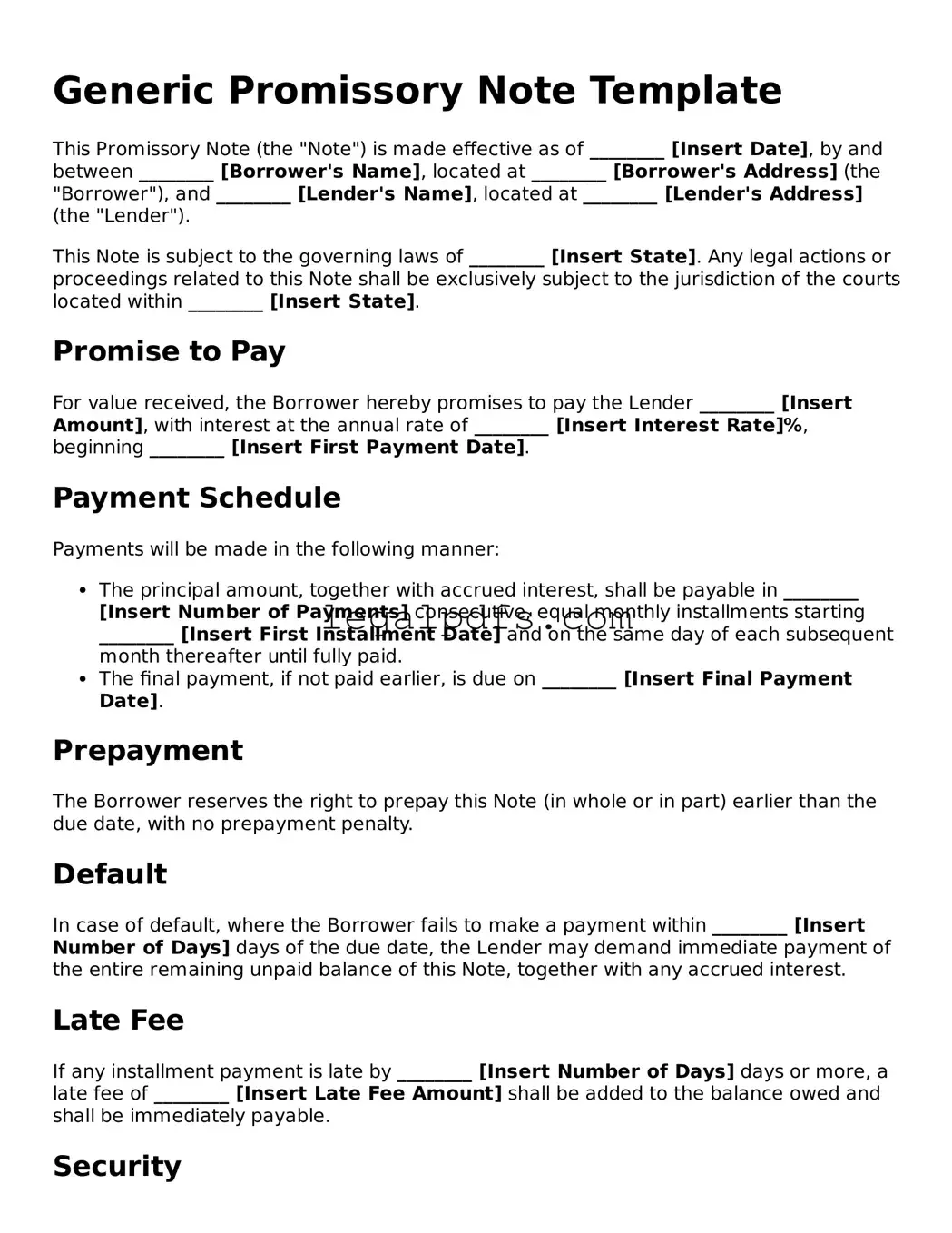What is a Promissory Note?
A Promissory Note is a legal document that outlines a promise made by one party, the borrower, to pay back a specified sum of money to another, the lender. This document serves as a formal declaration of the borrower's commitment to repay the loan under defined terms, including the loan amount, interest rate, repayment schedule, and any other conditions agreed upon by both parties.
Why is a Promissory Note important?
Having a Promissory Note is crucial as it legally binds the borrower to repay the borrowed amount, which provides security for the lender. It also clearly documents the loan's terms, helping to prevent misunderstandings and disputes over the repayment terms. In the event of non-payment, the note provides the lender with a legal pathway to seek recovery of the funds.
What are the key components of a Promissory Note?
Key components of a Promissory Note include the amount borrowed, interest rate, repayment schedule (dates and amounts), information about the parties involved (borrower and lender), signatures of both parties, and the date of the agreement. Optional clauses may include penalties for late payments, a provision for acceleration of the debt, and security/collateral backing the loan.
Is a Promissory Note legally binding?
Yes, a Promissory Note is a legally binding document. Once signed by both the borrower and the lender, it obligates the borrower to repay the loan according to the terms laid out in the agreement. Failure to comply with these terms can result in legal repercussions for the borrower, including lawsuits and damage to their credit rating.
Can a Promissory Note include collateral?
Absolutely. A Secured Promissory Note includes a clause that ties the repayment of the loan to a piece of collateral, usually property or a valuable asset. If the borrower fails to repay the loan, the lender has the right to seize the collateral as repayment for the debt. This provides an extra layer of security for the lender.
What happens if a borrower does not repay a Promissory Note?
Should a borrower fail to repay the loan as agreed, the lender has the right to take legal action to recover the debt. This can include filing a lawsuit against the borrower, seizing collateral if the note is secured, and pursuing other legal avenues to ensure repayment. It's important for borrowers to communicate with lenders if they're unable to meet repayment commitments to potentially negotiate alternative arrangements.
Can the terms of a Promissory Note be modified?
Yes, the terms of a Promissory Note can be modified, but any modifications must be agreed upon by both the borrower and the lender. The changes should be documented in writing, and both parties should sign any addendum or modification document. This ensures that the updated terms are enforceable and clear to both sides.
Do Promissory Notes need to be notarized?
While notarization is not always a legal requirement for Promissory Notes, getting the document notarized can add an extra layer of legal protection. Notarization formally verifies the identity of the parties signing the document, which can be helpful in preventing disputes over the validity of signatures or the terms of the loan.
How can a Promissory Note be enforced?
To enforce a Promissory Note, the lender may need to take legal action against the borrower if they fail to repay according to the terms. This can involve filing a lawsuit for breach of contract. The specific enforcement methods available will depend on the terms of the note and the laws of the jurisdiction where it was issued. For secured loans, the process may include seizing and selling the collateral. It is advisable for lenders to consult with legal professionals to explore their options.
